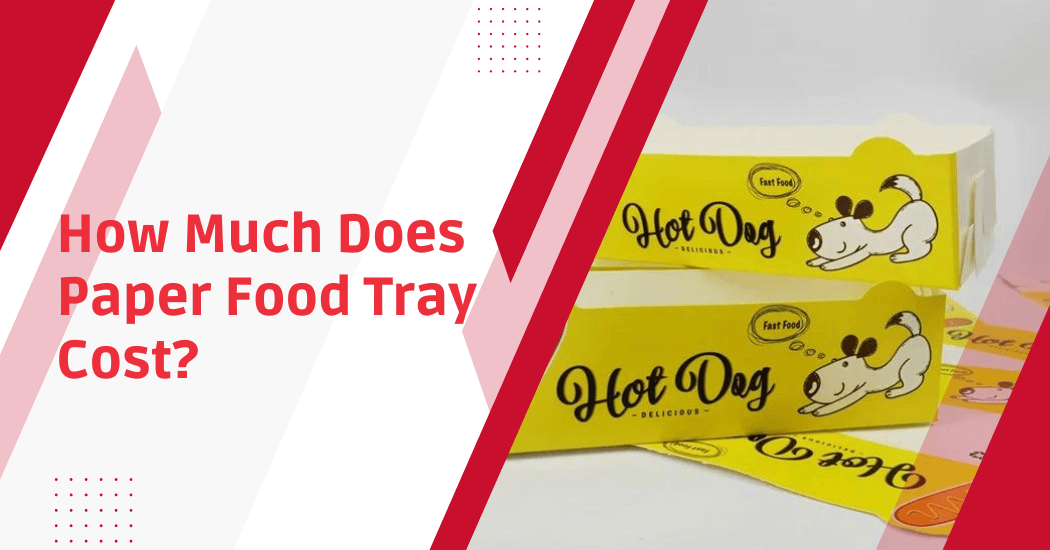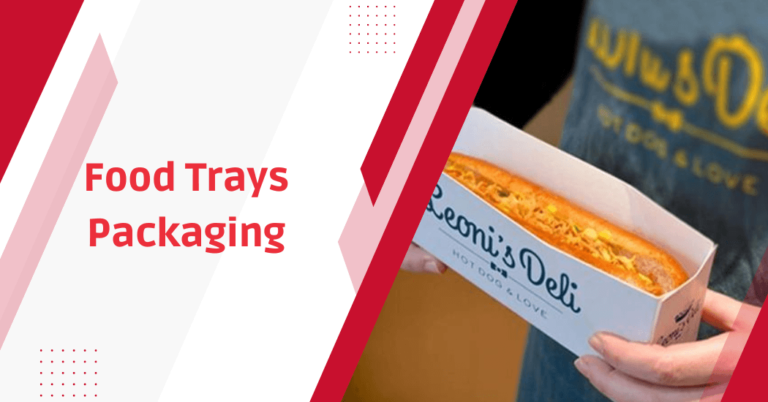How much does a paper food tray cost?
When considering the cost of food service supplies, paper food trays often come into the picture due to their ubiquitous use in the food industry. These trays, normally used in restaurants, food trucks and events, are known for their affordability and convenience.
The price of paper food trays can vary based on several factors such as size, design, quantity and the supplier’s pricing strategy.
This article will delve into the factors that affect the price of paper food trays, providing a comprehensive guide to help you budget effectively.
Food Tray Cost
On average, a paper food tray can cost anywhere from $0.20 to $0.80 per piece. However, the cost can fluctuate based on the bulk quantity purchased. For instance, purchasing in larger quantities often leads to a discounted rate.
Additionally, the cost can vary based on the quality of the paper, the presence of any unique designs or branding and the overall construction of the tray.
High-end or custom made trays can potentially cost more. It’s essential to consider these factors and compare prices from different suppliers to ensure you’re getting the best deal for your specific needs.
Average cost of different types of paper food trays
| Type of paper food tray | Average cost per piece |
|---|---|
| Standard (Small Size) | $0.15 – $0.70 |
| Standard (Large Size) | $0.20 – $0.70 |
| Custom-Branded (Small Size) | $0.18 – $0.80 |
| Custom-Branded (Large Size) | $0.25 – $1.0 |
| Eco-Friendly (Small Size) | $0.18 – $0.70 |
| Eco-Friendly (Large Size) | $0.22 – $0.90 |
Factors that affect the cost of paper food tray
As mentioned earlier, several factors can influence the cost of paper food trays. These include:
- Material quality: The quality of the paper used to make the food tray can significantly affect the price. High-quality, durable paper that can hold up heavy or moist food without breaking or leaking tends to be more expensive.
- Size: The size of the tray also factors into the cost. Larger trays require more material to produce and are therefore typically pricier than their smaller counterparts.
- Design and branding: Custom-made trays with unique designs or branding will cost more than standard, plain trays. The complexity of the design can also impact the price.
- Quantity purchased: Generally, the more trays you purchase at once, the cheaper the cost per unit. This is because suppliers often offer discounts for bulk purchases.
- Supplier: Different suppliers have different pricing strategies based on factors such as their production costs, market positioning and business strategies. Therefore, shopping around and comparing prices from multiple suppliers is essential to ensure you get the best deal.
- Eco-friendliness: If the trays are made from recycled materials or are certified compostable, they can cost more due to the processes involved in ensuring they are environmentally friendly.
However, opting for eco-friendly trays can be a wise investment considering the increasing consumer demand for sustainable packaging.
Tips for purchasing paper food trays
When purchasing paper food trays, keep in mind the following tips to ensure you’re getting the best value for your money:
- Consider your specific needs: Before purchasing, you should identify the exact requirements for your food trays. Do you need large trays for full meals or smaller ones for snacks? Do you need heavy-duty trays for moist or heavy food? These considerations will help guide your purchase.
- Budget accordingly: While cheaper isn’t always better, it’s essential to budget wisely. Consider the per-unit cost and whether there are discounts for buying in bulk.
- Check quality: Ensure the trays are durable and can withstand the weight and moisture of the food you intend to serve. You wouldn’t want your customers dealing with leaking or breaking trays.
- Go for eco-friendly options: If possible, choose trays made from recycled or biodegradable materials. Not only is this better for the environment but it can also attract environmentally-conscious customers.
- Compare suppliers: Don’t settle for the first supplier you find. Compare several options, looking at their prices, product range, delivery times and reviews.
- Custom branding: If branding is crucial for your business, consider investing in custom-made trays with your logo. This can serve as a form of advertising and make your meals more memorable for your customers.
FAQs – Food Tray Costing
Does the size of the paper food tray affect its cost?
Yes, the size of the tray plays a role in determining the cost. Larger trays require more material to produce and are typically pricier than smaller trays.
Are eco-friendly paper food trays more expensive?
Eco-friendly trays often cost more due to the processes involved in ensuring they are environmentally friendly. However, they are a good investment considering the growing consumer demand for sustainable packaging.
How does custom branding impact the cost of paper food trays?
One of the top considerations when selecting paper food trays for your business is their cost. However, another important factor to keep in mind is how custom branding can impact the cost of these trays.
Custom branding refers to the process of adding a company’s logo or design onto the paper food tray itself.
Is there a difference in cost between plain and custom-designed paper food trays?
Yes, there is a difference in cost between plain and custom-designed trays. Custom designs often require more time and resources to produce, making them pricier than plain trays.
However, the added branding and uniqueness can make it worth the investment for businesses looking to stand out.
Wrap Up
The cost of paper food trays varies widely depending on several factors. These include the quality of the materials used, the size of the trays, whether they feature custom branding, the quantity purchased, the supplier and the eco-friendliness of the trays.
While standard small and large-size trays can range from $0.20 to $0.80 per piece, custom-branded or eco-friendly options may cost up to $0.40 each.
Buyers need to consider their specific needs, budget accordingly, check the quality of the trays, opt for eco-friendly options if possible, compare suppliers and consider the impact of custom branding.






